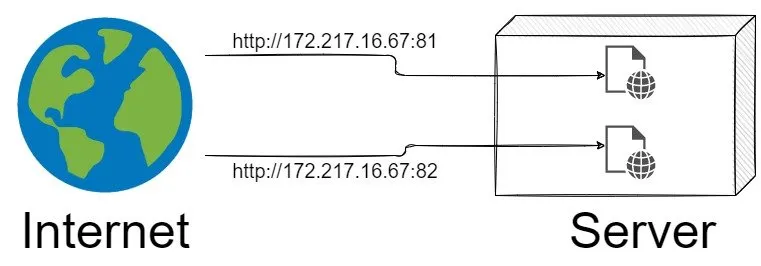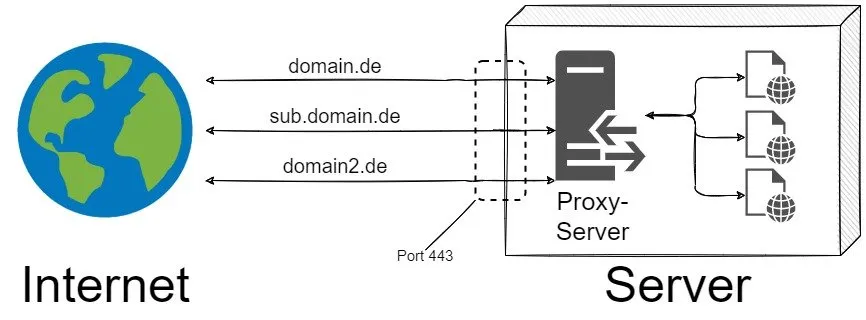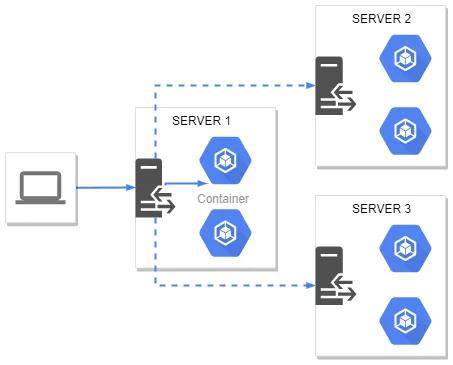Proxy-Server
Every network connected to the Internet has a public IP address that serves as its gateway to the outside world.
For example, if you type 172.217.16.67 into your web browser, you will end up at google.com. This is an HTTP request, specifically http://172.217.16.67:80. While port 80 is standard, any of the 65,535 available ports could technically be used.

Direct IP access has two major limitations: lack of SSL encryption and difficult-to-remember IP addresses. This is where proxy servers become essential. A reverse proxy server acts as an intermediary that can route different services under different domains while providing enhanced security and performance.

Several popular proxy server solutions are available:
- Nginx Proxy Manager
- Traefik
- Nginx
- Caddy
- Swag
- HAProxy
- Apache
And many others.
For complex setups, multiple reverse proxy servers can be configured in series. This architecture is particularly useful when services span different Docker networks or when multiple layers of routing are required.
